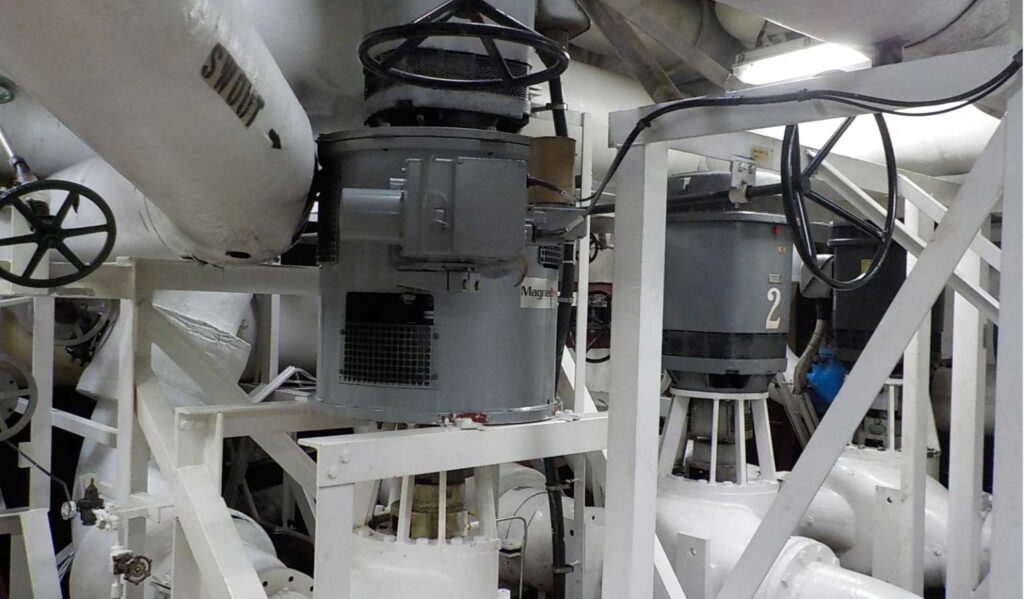
Slight Modifications on the Seas (Part One, Naval Applications)
The USNS Sisler is a Watson-class cargo ship named for First Lieutenant George K. Sisler, a Medal of Honor recipient. The U.S. Naval ship was put into service in the Pacific Ocean on December 1, 1998 and is operated by a civilian crew of 26, plus up to 50 active-duty personnel. The ship is a large, medium-speed, roll-on/roll-off (LMSR) vessel that can carry an entire U.S. Army Task Force, including 58 tanks, 48 other tracked vehicles, plus more than 900 trucks and other wheeled vehicles.
MagnaDrive has supported the freshwater and seawater pumping systems aboard the USNS Sisler with its adjustable speed drives (ASDs) for 8+ years without issue. These drives provide lower maintenance and operating costs thanks to the transferring torque from motors to driven equipment across an air gap without shaft-to-shaft physical connection. It has been savings more than of 50% energy. This “disconnected connection” provides reduced vibration that increases bearing and seal life.

Adjusting the Speed
The Sisler freshwater and seawater pumping systems that are used for cooling various on-board systems were constant flow systems without two-way control valves. This resulted in full flow throughout the system. The freshwater supply temperature (discharge of the plate exchanger on the freshwater side) controlled the seawater pumps. As demand reduced and/or seawater temperature reduced, the pumps could slow down.
Because the engineers were mixing variable and constant speed pumps, a minimum speed had to be established to prevent deadheading the adjustable speed pump. Deadheading occurs when the pump’s discharge is closed either due to a blockage in the line or a closed valve.
The set point for the system needed to be established. It was determined that the freshwater pumps would be regulated by controlling them to differential pressure set points—as the number of generators is staged on/off, different pressure requirements could be readily calculated.
The Freshwater Pump System
The five diesel generators, each with 390 gallons per minute (GPM) design cooling requirements, were closed off with electric motor-operated butterfly valves. These valves were capable of taking the units offline when not in operation. The impact on the required pressure the pump needed to develop was calculated and could be used to save energy by establishing different pressure set points based on the number of generators in operation.
Seawater ASD Control
As both variable and constant speed pumps were operating in parallel in this application, a minimum speed for the ASD unit needed to be established. Let’s break this down from an engineering standpoint:

The seawater pumping system should have been controlled by the supply temperature of the freshwater system and measured directly after the plate and frame HX. The cooling water temperature set point/design temperature also needed establishment.
As the freshwater system cooling demand reduces and/or as the seawater temperature reduces, the ASD will be able to reduce in flow. The pump selections needed to be checked against the end of curve operation for single pump operation.
Next week in Part II we’ll examine how the MagnaDrive ASDs provided greater energy savings within the system and examine the different variables that came into play.

